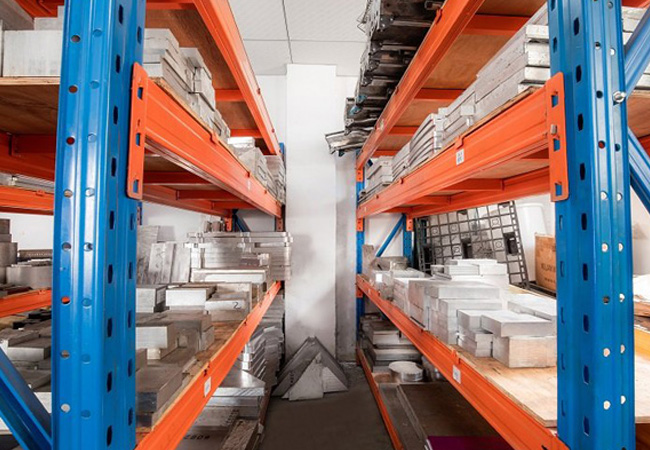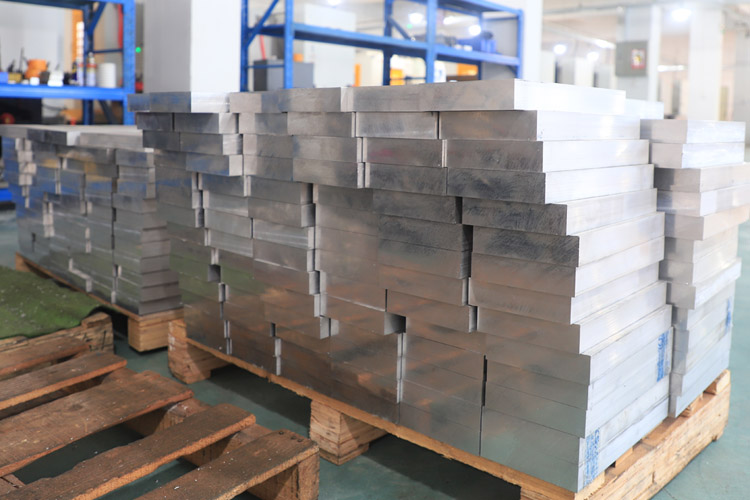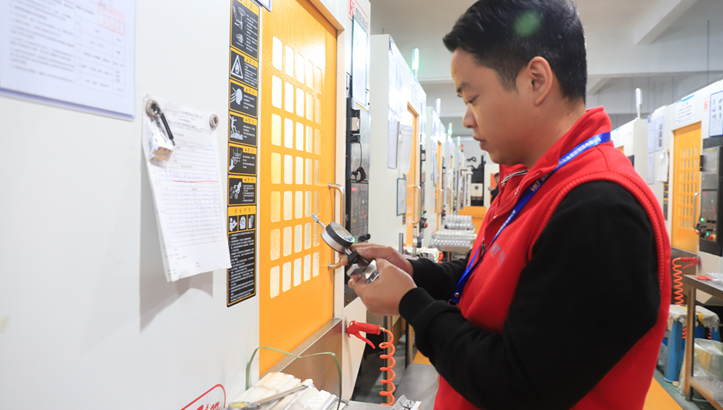Aluminum 6061 vs 6063: A Guide to the Differences
In the field of CNC machining services, aluminum alloys are widely favored due to their lightweight, high strength and excellent machining performance. Among them, 6061 and 6063 are two commonly used aluminum alloys in this field, each with unique chemical composition, physical properties and mechanical properties, suitable for diverse industrial needs. This article aims to provide a pragmatic and accurate reference for project material selection by comparing and analyzing the characteristics of these two materials, ensuring that the most suitable aluminum alloy material for project needs is selected.

What is 6061 Aluminum?
6061 aluminum, also known as 6061 aluminum alloy, is an aluminum alloy material widely used in the industrial field. It belongs to the Al-Mg-Si alloy series and is a precipitation-hardening aluminum alloy. The main alloying elements include magnesium and silicon.
What is 6063 Aluminum?
6063 aluminum is an alloy grade, belonging to the aluminum-magnesium alloy series (6 series), mainly composed of aluminum, magnesium, silicon and other elements, and may also contain a small amount of copper and other alloying elements. This alloy has a wide range of applications in many fields due to its excellent mechanical properties, good extrusion and corrosion resistance.
Chemical composition of 6061 and 6063 aluminum.
Chemical composition of 6061 aluminum alloy
6061 aluminum alloy is a medium-strength aluminum alloy belonging to the Al-Mg-Si alloy system. Its main alloying elements include magnesium , silicon and a small amount of copper manganese, zinc, chromium, titanium and iron. Specifically, its chemical composition range is as follows:
- Copper (Cu): 0.15%~0.4%
- Manganese (Mn): 0.15%
- Magnesium (Mg): 0.8% to 1.2%
- Zinc (Zn): 0.25%
- Chromium (Cr): 0.04% to 0.35%
- Titanium (Ti): 0.15%
- Silicon (Si): 0.4% to 0.8%
- Iron (Fe): 0.7%
- The balance is aluminum (Al)
Chemical composition of 6063 aluminum alloy
6063 aluminum alloy is an aluminum alloy with excellent surface finish and extrudability. Its main alloying elements are aluminum and silicon, and it also contains small amounts of copper, magnesium, zinc, manganese, titanium and chromium. Specifically, its chemical composition range is as follows:
- Aluminum (Al): Balance (usually more than 90%)
- Silicon (Si): 0.20%~0.6%
- Copper (Cu): ≤0.10%
- Magnesium (Mg): 0.45% to 0.9%
- Zinc (Zn): ≤0.10%
- Manganese (Mn): ≤0.10%
- Titanium (Ti): ≤0.10%
- Chromium (Cr): ≤0.10%
- Iron (Fe): ≤0.35%
Mechanical properties of 6061 and 6063 aluminum
Mechanical properties of 6061 aluminum
Strength: It has high tensile strength and yield strength. After T6 heat treatment, its ultimate tensile strength can reach more than 290 MPa, and its yield strength can reach more than 240 MPa.
Hardness: Due to the effect of precipitation hardening, the hardness of 6061 aluminum is also relatively high.
Elongation: It exhibits good ductility and can undergo large plastic deformation without immediate breakage when subjected to stress.
Machining performance: It has good formability, weldability and machinability, and is suitable for complex processing and forming operations.
Mechanical Properties of 6063 Aluminum
Strength: Although 6063 aluminum also has certain tensile strength and yield strength, it is usually lower than 6061 aluminum. Its yield strength is generally between 110 MPa and 280 MPa, and its tensile strength is between 150 MPa and 280 MPa.
Hardness: Compared with 6061 aluminum, 6063 aluminum has a lower hardness.
Machining performance: 6063 aluminum has good processing performance and is easy to extrude, form and weld. Its surface finish is high and it is suitable for applications that require a good appearance and easy machining.
Corrosion Resistance: 6063 aluminum generally exhibits better corrosion resistance than 6061 aluminum.
6061 and 6063 Corrosion Resistance
6061 aluminum alloy has good corrosion resistance due to its alloying design and heat treatment process. The main alloying elements of the alloy are magnesium and silicon, and the compounds they form with aluminum can enhance the corrosion resistance of the material. In addition, the corrosion resistance of 6061 aluminum alloy can be further improved through surface treatment processes such as anodizing.
6063 aluminum alloy also has excellent corrosion resistance. Its main components include aluminum, magnesium and silicon, among which the silicon content has an important influence on corrosion resistance. The addition of silicon can improve the fluidity and corrosion resistance of aluminum alloy, so that 6063 aluminum alloy can be used for a long time in a humid or corrosive environment without obvious corrosion.
6061 and 6063 Bending
The bending strength of 6061 aluminum alloy is generally around 230 MPa, showing good bending performance. It should be noted that this value may vary due to different heat treatment states and processing technologies. The bending strength of 6063 aluminum alloy is generally around 228 MPa, which is slightly lower than 6061, but still within an acceptable range. This alloy can show good toughness and ductility when bent. When selecting materials, in addition to considering bending strength, it is also necessary to comprehensively consider factors such as specific application scenarios, machining requirements, and costs.
Welding of 6061 and 6063 Aluminum
The welding performance of 6061 and 6063 aluminum is quite good. Both belong to the 6 series medium strength alloy and have similar chemical composition and physical properties, which enable them to achieve good welding connections. These two aluminum alloys can be welded by a variety of welding methods, such as arc welding, TIG welding and MIG welding, to achieve high-quality welding connections. In the welding process, it is very important to choose the appropriate welding process and parameters to ensure the strength and appearance quality of the weld.
6061 and 6063 Aluminum Prices
The prices of 6061 and 6063 aluminum are affected by many factors such as market supply and demand, raw material prices, and production costs, and the specific prices will fluctuate. As medium-strength aluminum alloys, their prices vary depending on the product form, machining status, and market conditions. When purchasing, you need to make comprehensive considerations based on the actual situation and the supplier’s quotation.
The Difference Between 6061 and 6063 Aluminum.

| 6061 Aluminum Alloy | 6063 Aluminum Alloy | |
| Chemical composition | The main alloying elements are magnesium and silicon, and may contain small amounts of manganese, chromium, copper, zinc, titanium, zirconium, lead and bismuth. | The main alloying elements are aluminum, magnesium and silicon, with higher contents of manganese and silicon. |
| Mechanical properties | It has high strength and hardness, good plasticity, weldability, processability and medium strength. | It is relatively soft, has good ductility and processability, and also has good impact toughness and thermoplasticity. |
| tensile strength | ≥180 MPa | Relatively low, but the exact value will vary depending on the specific product and application |
| Yield Strength | ≥110 MPa | Relatively low, but the specific value will also vary according to actual conditions |
| Corrosion resistance | It has good corrosion resistance, especially in highly corrosive environments such as ocean and chemical industries. | It also has excellent corrosion resistance and is suitable for humid or slightly corrosive environments. |
| price | The specific price will fluctuate due to various factors such as market supply and demand, raw material prices, and production costs. | The price is affected by many factors. When purchasing, you need to make comprehensive considerations based on the actual situation and the supplier’s quotation. |
| Application Areas | It is widely used in aerospace, automobile manufacturing, architectural decoration, electronics, transportation and other fields where high loads need to be carried. | It is commonly used in architectural aluminum doors and windows, curtain wall frames, rail transit, industrial accessories and other fields, and has high requirements on processing performance and surface quality. |
In Conclusion
In CNC machining services, 6061 and 6063 aluminum alloys each have their own unique advantages. 6061 aluminum alloy is suitable for parts that withstand high stress and harsh environments due to its high strength and corrosion resistance; while 6063 aluminum alloy is often used in products with high requirements for machining efficiency and appearance due to its good machining performance and beautiful appearance. Understanding the performance differences between these two alloys is of great significance for rationally selecting materials, optimizing machining processes and improving product quality.
Choose VMT to Find the Right Aluminum for Your Project

When choosing aluminum alloy materials, considering the specific needs of the project, VMT, as a professional supplier of extruded aluminum products with 14 years of CNC machining experience, can provide you with suitable alloy recommendations and customized extrusion profile solutions.
At the same time, as a CNC machining manufacturer, we provide precision machining services including cutting, drilling, milling and turning for 6061 and 6063 aluminum alloys to ensure product quality and process accuracy and meet diverse needs from precision mechanical parts to architectural decoration.
Feel free to contact us for details.
Frequently Asked Questions About Aluminum 6061 and 6063
Common Applications of 6061 Aluminum Alloy.
6061 aluminum alloy occupies an important position in many industries due to its lightweight, high strength, corrosion resistance and easy processing. In the aerospace field, it is often used to manufacture aircraft parts, such as skins and frames, to meet complex mechanical and corrosive environment requirements. The automotive manufacturing industry takes advantage of its weight reduction and reinforcement and applies it to the manufacture of car bodies, wheels and engine parts. In shipbuilding, 6061 aluminum alloy is widely used in hull structures due to its excellent corrosion resistance.
Tensile Strength of 6061 Aluminum.
Generally speaking, the tensile strength of 6061 aluminum alloy is roughly between 205 MPa and 310 MPa. It should be noted that in actual use, the tensile strength of 6061 aluminum alloy may be affected by many factors, such as the material’s heat treatment process, machining method, microstructure, and test conditions.
Which One is More Suitable for Anodizing, 6061 or 6063?
Both 6061 and 6063 aluminum alloys are suitable for anodizing, which can form a dense oxide film to enhance corrosion resistance and wear resistance. When choosing, you need to decide according to the needs of the specific application scenario: if high strength and good corrosion resistance are required, 6061 may be more suitable; if appearance and processing performance are more important, 6063 may be a better choice. At the same time, cost factors, including raw material and machining costs, must also be considered to make a comprehensive judgment.


